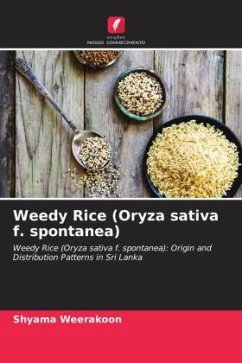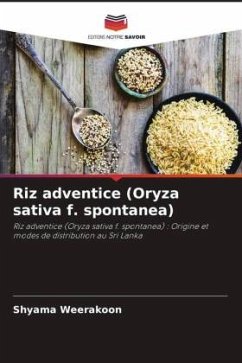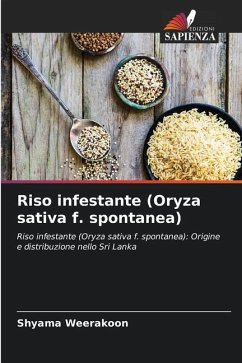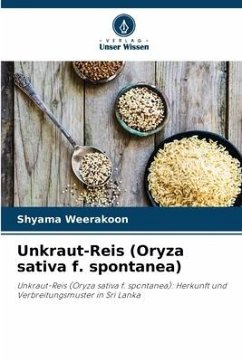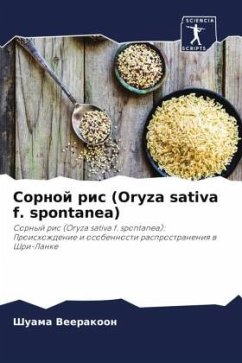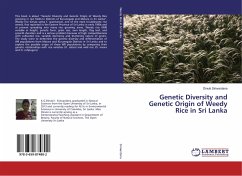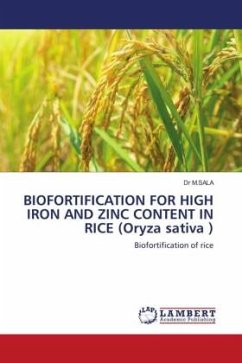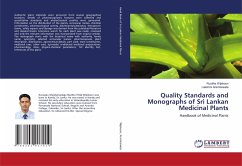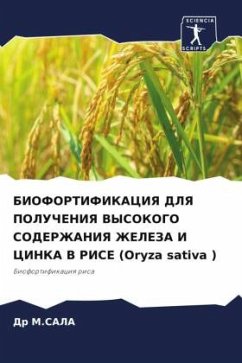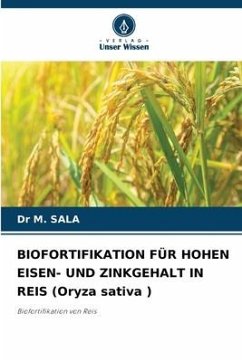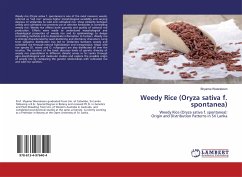
Weedy Rice (Oryza sativa f. spontanea)
Weedy Rice (Oryza sativa f. spontanea): Origin and Distribution Patterns in Sri Lanka
Versandkostenfrei!
Versandfertig in 6-10 Tagen
24,99 €
inkl. MwSt.

PAYBACK Punkte
12 °P sammeln!
Weedy rice (Oryza sativa f. spontanea) is one of the most nuisance weeds, referred as "red rice" possess higher morphological variability and varying degrees of similarities to wild and cultivated rice. Close similarity between weedy and cultivated rice prevents use of selective herbicides in controlling weedy rice. Weedy rice affects both quantity and quality of national rice production. Efforts were made to understand morphological and physiological properties of weedy rice and its epidemiology to design controlling methods and to disseminate information to farmers. Weedy rice is strongly ch...
Weedy rice (Oryza sativa f. spontanea) is one of the most nuisance weeds, referred as "red rice" possess higher morphological variability and varying degrees of similarities to wild and cultivated rice. Close similarity between weedy and cultivated rice prevents use of selective herbicides in controlling weedy rice. Weedy rice affects both quantity and quality of national rice production. Efforts were made to understand morphological and physiological properties of weedy rice and its epidemiology to design controlling methods and to disseminate information to farmers. Weedy rice is strongly characterized by seed shattering and dormancy characters. Long term sympatric distribution has led to similarities between weedy and cultivated rice through natural hybridization and introgression. Major wild rice species (O. nivara and O. rufipogon) are also distributed all over the country. The content of the book discusses levels of genetic diversity of weedy rice populations in different climatic zones in Sri Lanka through agro-morphological and molecular studies and explore the possible origin of weedy rice by comparing the genetic relationships with cultivated rice and wild rice varieties.



